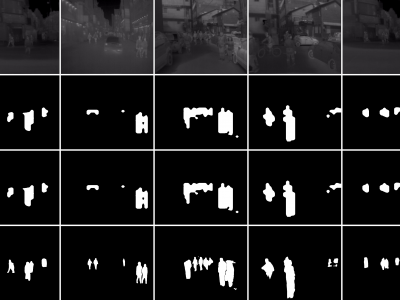Artificial Intelligence

As the world increasingly becomes more interconnected, the demand for safety and security is ever-increasing, particularly for industrial networks. This has prompted numerous researchers to investigate different methodologies and techniques suitable for intrusion detection systems (IDS) requirements. Over the years, many studies have proposed various solutions in this regard, including signature-based and machine learning (ML)-based systems. More recently, researchers are considering deep learning (DL)-based anomaly detection approaches.
- Categories:
 195 Views
195 Views
This dataset comprises high-resolution imaging data of biological porcine, clinically approved porcine and bovine, and chick embryo heart tissues. The dataset includes comprehensive anatomical and structural details, making it valuable for research in cardiovascular biology, tissue engineering, and computational modeling. The porcine and bovine heart samples are clinically approved, ensuring relevance for translational and preclinical studies. The chick embryo heart data provides insights into early cardiac development.
- Categories:
 78 Views
78 ViewsThis dataset is the outcome of an observation on Millet traits under seed coating and covering. For covering we rely on Germination Percentage (FGP), Germination Index (GI),Mean Germination Time (MGT), Seedling Length( SL) and Seedling Vigour Index (SVI) and Abnormal Seedling have been measured. Moreover, different enzyme levels including catalase, peroxidase, and Malondialdehyde (MDA) are measured.
- Categories:
 149 Views
149 ViewsThis dataset consists of 737 documents from the BBC Sport website, corresponding to sports news articles in five topical areas from 2004-2005. The class labels are divided into five categories: athletics, cricket, football, rugby, and tennis. The datasets have been pre-processed using the Porter stemming algorithm, stop-word removal, and filtering out terms with low frequency (count < 3).
- Categories:
 173 Views
173 Views
This dataset contain the pulse responses of the Sallen-Key bandpass filter circuit and the amplifier board circuit. The test excitation is a 10 us pulse signal with an amplitude of 5 V and a frequency of 5 kHZ that exhibits abundant frequency components. By observing the pulse response, the sampling frequency is set to 5 MHz and the number of sampling points for each sample is fixed at 1000 in Case 1. PSPICE is applied for circuit simulation to set up the circuit fault according to the range of fault component parameter values.
- Categories:
 68 Views
68 ViewsThese are tight pedestrian masks for the thermal images present in the KAIST Multispectral pedestrian dataset, available at https://soonminhwang.github.io/rgbt-ped-detection/
Both the thermal images themselves as well as the original annotations are a part of the parent dataset. Using the annotation files provided by the authors, we develop the binary segmentation masks for the pedestrians, using the Segment Anything Model from Meta.
- Categories:
 396 Views
396 ViewsLivox-3DMatch contains 11 scenes with 33 scans. Livox-3DMatch augments the original 3DMatch training data from 14,400 pairs to 17,700 pairs (a 22.91% increase). By training on this augmented dataset, the performance of the SOTA learning-based method SGHR is improved by 2.90% on 3DMatch,4.29% on ETH, and 22.72% (translation) / 11.19% (rotation) on ScanNet.
- Categories:
 435 Views
435 Views
Efficient and realistic tools capable of modeling radio signal propagation are an indispensable component for the effective operation of wireless communication networks. The advent of artificial intelligence (AI) has propelled the evolution of a new generation of signal modeling tools, leveraging deep learning (DL) models that learn to infer signal characteristics.
- Categories:
 1096 Views
1096 ViewsThe dataset includes 22 projects and 1680 user stories, with the aim of classifying these stories into those suitable for AI implementation and those not recommended for AI implementation. The labeling was done in a group, reaching a consensus on each user story in each project, determining whether it is susceptible to being developed with AI. Thus, each user story was evaluated and assigned a value of 1 if it was considered suitable for AI implementation (this label was named AI), and a value of 0 if it was not (this label was named not-AI).
- Categories:
 494 Views
494 ViewsAbstract—In recent years, there has been a significant advancement
in the field of healthcare systems with the introduction
of fifth generation cellular communications and beyond (5GB).
This development has paved the way for the utilization of
telecommunications technologies in healthcare systems with an
level of certainty, reaching up to 99.999 percent. In this paper,
we present a novel task computing framework that can address
the requirements of healthcare systems, such as reliability. In
- Categories:
 285 Views
285 Views



